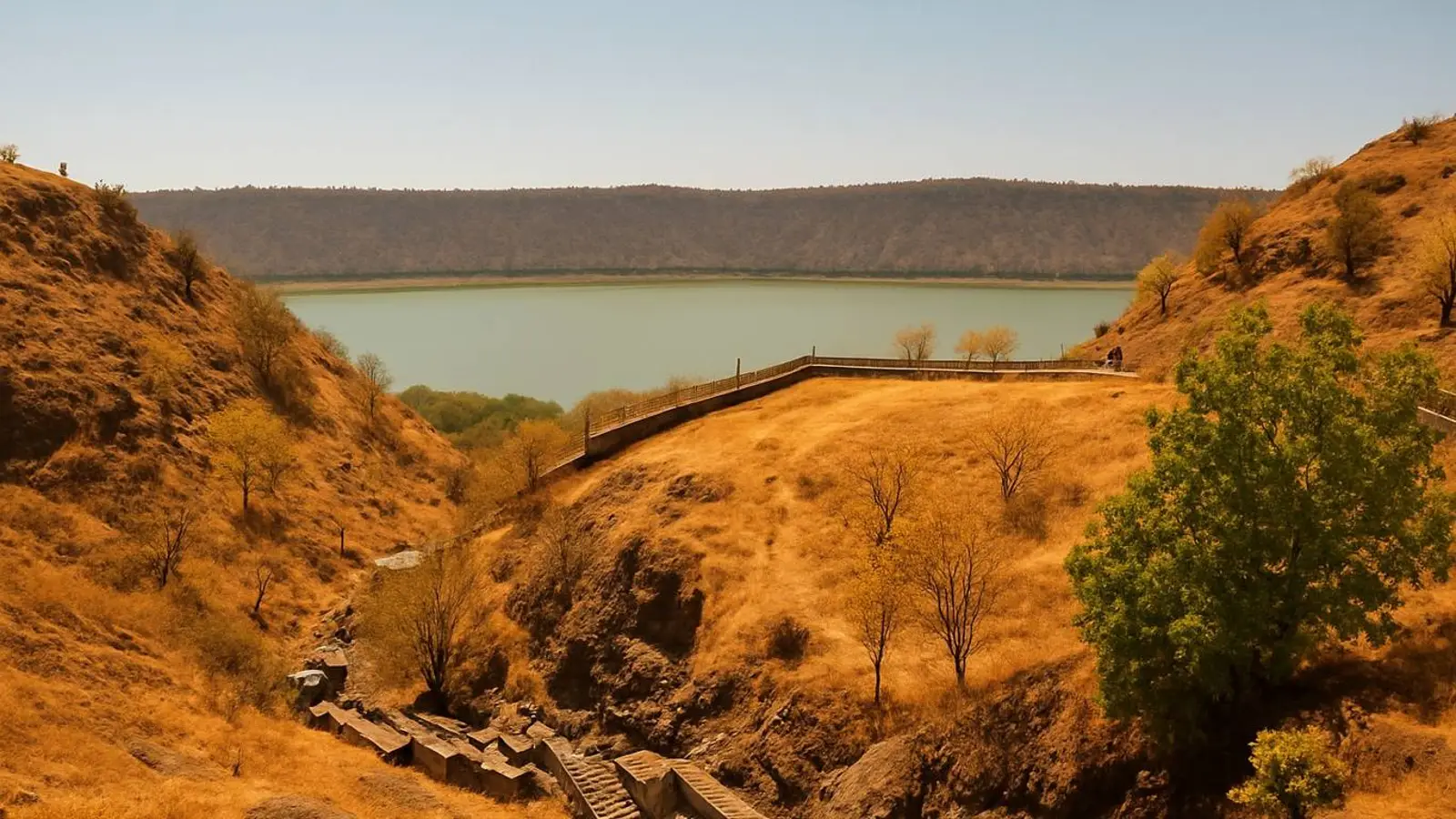https://boda.su/en/posts/id1381-lonar-lake-india-s-unique-meteor-crater-of-salt-and-myth
Lonar Lake: India's unique meteor crater of salt and myth
Lonar Lake in Maharashtra: a rare meteor crater with alkaline waters and ancient temples
Lonar Lake: India's unique meteor crater of salt and myth
Explore Lonar Lake in Maharashtra, a unique meteor crater with saline-alkaline water, rare microbes, and ancient temples—where science, legend, and nature meet.
2025-11-26T22:05:23+03:00
2025-11-26T22:05:23+03:00
2025-11-26T22:05:23+03:00
Imagine a place where space seems to have brushed Earth and left a clear mark. The TURISTAS portal has highlighted such a spot in India’s Maharashtra state: Lonar Lake, born of a meteorite strike and still drawing researchers with its uncommon character.How did this lake form?Thousands of years ago, a meteorite slammed into the planet at high speed. It punched through basalt rock and left an impressive crater that eventually filled with water—this is how Lonar Lake emerged. The lake spans roughly 1.2 kilometers across and plunges to depths of more than 130 meters.Scientists still debate the crater’s age. Some argue for about 52,000 years, others for 570,000. One point stands firm: there are no other craters like it in basaltic rock anywhere else on Earth.Why is the water so unusual?Unlike familiar freshwater lakes, Lonar holds a mix of saline and alkaline water. Its chemistry reflects the local soils and the closed nature of the basin—what enters stays. Even under these conditions, life finds a foothold. Rare microorganisms thrive here, scarcely seen elsewhere. Researchers study them as a window into life that might endure extreme environments, including those on Mars.Life around the craterFor all the oddities of the water, the crater’s rim supports a lively ecosystem. Trees take root, birds circle, and small animals make their home here. Lonar is a protected natural monument and recognized as a site of global natural significance, a status earned by its singular ecological makeup.Keeping such a place intact is a demanding task. While there have been no reports of serious threats over the past year, the pressures of human activity and a changing climate could leave their mark. The balance feels delicate.Temples, legends, and the hush of centuriesLonar’s value is cultural as well as natural. According to local legend, a demon named Lonasur was defeated here, and the lake took its name from him. Ancient temples still ring the crater, each one bearing intricate carvings and a story that reaches deep into the past.Pilgrims and travelers continue to come, yet for most people Lonar remains off the usual itinerary—quiet, compelling, and somehow overlooked.Its story resonates because Lonar stands as a rare witness to a collision between Earth and the cosmos, a reminder of how astonishing our planet is and how much it still has to tell.
Lonar Lake, meteor crater, Maharashtra, India, basalt crater, saline-alkaline lake, rare microorganisms, extremophiles, ancient temples, Lonasur legend, protected monument, impact crater, geology
2025
articles
Lonar Lake in Maharashtra: a rare meteor crater with alkaline waters and ancient temples
Explore Lonar Lake in Maharashtra, a unique meteor crater with saline-alkaline water, rare microbes, and ancient temples—where science, legend, and nature meet.
Изображение сгенерировано нейросетью Dall-e
Imagine a place where space seems to have brushed Earth and left a clear mark. The TURISTAS portal has highlighted such a spot in India’s Maharashtra state: Lonar Lake, born of a meteorite strike and still drawing researchers with its uncommon character.
How did this lake form?
Thousands of years ago, a meteorite slammed into the planet at high speed. It punched through basalt rock and left an impressive crater that eventually filled with water—this is how Lonar Lake emerged. The lake spans roughly 1.2 kilometers across and plunges to depths of more than 130 meters.
Scientists still debate the crater’s age. Some argue for about 52,000 years, others for 570,000. One point stands firm: there are no other craters like it in basaltic rock anywhere else on Earth.
Why is the water so unusual?
Unlike familiar freshwater lakes, Lonar holds a mix of saline and alkaline water. Its chemistry reflects the local soils and the closed nature of the basin—what enters stays. Even under these conditions, life finds a foothold. Rare microorganisms thrive here, scarcely seen elsewhere. Researchers study them as a window into life that might endure extreme environments, including those on Mars.
Life around the crater
For all the oddities of the water, the crater’s rim supports a lively ecosystem. Trees take root, birds circle, and small animals make their home here. Lonar is a protected natural monument and recognized as a site of global natural significance, a status earned by its singular ecological makeup.
Keeping such a place intact is a demanding task. While there have been no reports of serious threats over the past year, the pressures of human activity and a changing climate could leave their mark. The balance feels delicate.
Temples, legends, and the hush of centuries
Lonar’s value is cultural as well as natural. According to local legend, a demon named Lonasur was defeated here, and the lake took its name from him. Ancient temples still ring the crater, each one bearing intricate carvings and a story that reaches deep into the past.
Pilgrims and travelers continue to come, yet for most people Lonar remains off the usual itinerary—quiet, compelling, and somehow overlooked.
Its story resonates because Lonar stands as a rare witness to a collision between Earth and the cosmos, a reminder of how astonishing our planet is and how much it still has to tell.

